Error codes for AEG washing machines
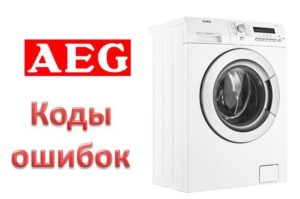 Automatic washing machines of the famous AEG brand have excellent technical characteristics, high build quality, and are distinguished by a wide range of functions and additions. The washing machines are equipped with a self-diagnosis system for emerging faults - a large number of different machine error codes are programmed into the unit’s memory, which allows the user of the equipment to immediately find out about a failure that has occurred in the device. The electronic unit, having recognized a malfunction, will instantly display the error designation on the digital display.
Automatic washing machines of the famous AEG brand have excellent technical characteristics, high build quality, and are distinguished by a wide range of functions and additions. The washing machines are equipped with a self-diagnosis system for emerging faults - a large number of different machine error codes are programmed into the unit’s memory, which allows the user of the equipment to immediately find out about a failure that has occurred in the device. The electronic unit, having recognized a malfunction, will instantly display the error designation on the digital display.
The database of the self-diagnosis system contains about a hundred different fault codes; it is very difficult to constantly remember what each of them means. We will provide you with a detailed explanation of all the symbols, this will help you correctly diagnose the damage and carry out the repair yourself.
Codes dedicated to discharging and filling water
What to do when the machine suddenly stops functioning and notifies you of a malfunction, displaying an unknown code on the screen. First you need to understand which element of the system is damaged. First of all, we will analyze errors regarding the collection of water into the drum or the draining of waste liquid from the unit.
- E11 - indicates that the automatic machine was unable to fill the tank with water to the required level within a given period of time. The washing machine may display this designation due to a defect in the inlet valve, a violation of its winding, a clogged inlet hose or a filter installed at the inlet of the system. You can fix the malfunction on your own; to do this, you need to check the valve with a multimeter (the working element will show a resistance of 3.75 kOhm), clean the water intake hose and the filter.
- E13 – informs about water leakage from the system. In most cases, fluid leaks into the MCA pan. The unit should be examined for emergency leaks.
- E21 - tells the user that the washing machine did not drain the waste water within the time specified by the intelligence. There may be several reasons for such a failure: damage to the pump, clogged drain system, failure of the drain pump, defective control board. You can diagnose the drain pump using a multimeter; when checking the pump winding, the tester should show a value of 170 Ohms.
- E23 - warns that a malfunction has been detected in the main triac located on the unit control board. You can reset this error code, you just need to check and change the triac, or change the washer control unit.
- E24 - indicates a violation in the connection “control triac – drain pump”. To correct the situation, examine each section of the circuit and diagnose all elements using a multimeter.
- EF3 – signals the activation of the “Aqua Control” function. Another reason is a break or damage to the pump wires. You will have to replace either the pump or the pump cable.
Having figured out what problem appeared in the system, it will be easier to make repairs. The search for a broken part will instantly narrow down to one or two elements that will have to be tested.
Electrical and electronics breakdown
If there are failures in the electronics, you can see a certain group of codes on the display.Problems can be caused either by problems with the main electrical network or by damage to the machine’s wiring. Let's look at the designations of this category.
- E91 - informs about a communication failure between the control board and the washing machine interface. The way out of this situation is to replace the main control unit.
- E92 - indicates inconsistent operation of the user interface and the main control module.
- E93 - indicates that the washing machine is configured incorrectly. Specifying the correct configuration code will help eliminate the inaccuracy.
- E95 - indicates a violation in the “processor - non-volatile memory of the washing machine” circuit.
- E96 - signals an incorrect configuration of external parts (in particular the controller).
- E97 - indicates that the washing mode switch knob cannot function in harmony with the control module. This may be due to a configuration error or a malfunction of the main unit.
- E98 – informs about inconsistent operation of the unit motor and the control unit. It is necessary to either replace the circuit wiring or replace the control board with a working part.
- E9A - indicates a software violation between the electronics of the washing machine and the speaker. You can get rid of this code only by changing the main control module.
- EH1 (EB1) – indicates that the network voltage exceeds the permissible limit. Perhaps there is interference in the electrical network, or the power supply of the washing machine is not entirely reliable. If everything is normal, you should check the control unit.
- EH2, EH3 (EB2, EB3) – errors inform the user about too high and low voltage in the power supply network, respectively. In both cases, a change in electronics will be required.
- EHE (EBE) - indicates damage to the protective circuit relay.
- EHF (EBF) – signals that the protective circuit could not be recognized.
It is better to entrust repair work related to SMA electronics to a professional. The electronic module is the most expensive element of an automatic machine, so it is better not to repair it without special knowledge and skills.
Problems with sensors
Let's analyze the fault codes of the AEG washing machine, signaling some problems with various sensors. The main designations of this group of damages are presented below.
- E31 - indicates a failure of the water level (pressure) sensor in the tank. To correct this situation, you need to inspect the pressure switch and the contacts leading to it. If a wiring break is detected, the connection should be repaired. When the sensor breaks down, the pressure switch will have to be replaced.
- E32 - indicates that the pressure switch is not calibrated. For example, after the initial calibration, the liquid level in the tank is greater than the 0-66 mm mark, and the anti-boiling level has not been reached.
- E33 - warns that three system sensors are not working in coordination with each other. We are talking about a pressure switch, a level 1 sensor and protection of the heating element from unauthorized activation. There may be several factors that led to such a failure: damage to elements, clogged pipes. Also, E33 can be displayed when the mains voltage is too high, as a result of which the heating element leaks onto the AGR body. Check the tubular heater for breakdown; to do this, set the multimeter to buzzer mode and place its probes against the surface of the element.
- E34 – signals inconsistent operation of the connection between the pressure switch and the anti-boil level sensor. If the symbol appears on the digital screen for more than 60 seconds, the sensor should be replaced, the circuit contacts examined, and if necessary, replaced or cleaned. You can try changing the sensor pipe.
- E35 – states that the tank is full of water. To solve the problem, check the water level sensor with a multimeter. If the pressure switch is defective, replace the part.
- E36 - says that the protective sensor of the tubular heating element has broken down. The device needs to be replaced.
- E37 – indicates that water level sensor 1 is not functioning. The part will need to be replaced.
- E38 - warns that the pressure difference is not detected. The root cause of this may be a clogged pipe. To fix the problem, you need to clean the pipe or install a new tube.
- E39 - indicates a defect in the sensor that detects the overflow of liquid into the tank. Be sure to dismantle the old one and install a working sensor.
When identifying problems with various system sensors, it is necessary to identify which element is damaged, examine the wiring and, if necessary, completely replace the part.
Codes dedicated to water heating
Very often, the display of the AEG washing machine displays fault codes indicating damage to the heating element or thermistor. Let's look at the main designations of errors in this group.
- E61 - informs the user that the heating element cannot heat the water to the set temperature in the allotted time. It is important to diagnose the heater using a multimeter. A working heating element will give a resistance of 20-40 Ohms at room temperature.
This code will never appear during normal operation of the SMA; an error of this kind can only be determined during a service test.
- E62 – signals that within a specified period of time (5 minutes) the water temperature has exceeded 88 °C. In other words, the machine is overheating. First, examine the thermistor - you can check it with a tester. When measuring the resistance of the sensor at room temperature, the multimeter screen should display a value in the range from 5.7 to 6.3 kOhm. If the thermistor is working properly, diagnose the heating element and replace the part if necessary.
- E66 - warns that the heating element relay has failed. It is necessary to double-check the functionality of the relay, as well as its main circuit.
- E68 - indicates a very large current leak in the washing machine. To eliminate the failure, you should replace the tubular heater, and also check the elements directly associated with it: the temperature measurement sensor and wiring.
- E71 - indicates that the thermostat resistance is outside the permissible range. To find a way out of this situation, it is necessary to examine the thermistor for an open circuit or a short circuit of the thermostat. You should also inspect the heating element; perhaps it is the one that has failed.
- E74 – detects the displacement of the NTC temperature sensor in the system. To reset the error code, just check its location in the tank and, if it is displaced, install it in the right place.
- E3A - the designation indicates a breakdown of the heating element relay. In such a situation, the relay will need to be replaced.
Having seen one of the described codes on the screen, it is necessary to eliminate the problem as soon as possible. After all, problems with water heating can lead to even more serious consequences.
Problems with the motor and drive mechanism
The engine is one of the important elements of an automatic washing machine. If errors appear on the screen warning of any problems with the motor or drive mechanism, you need to act immediately.
- E51 - tells that a short circuit has occurred in the engine triac. You can reset the code by checking the functionality of the triac, and if a breakdown is detected, by replacing the non-functioning element.
- E52 - states that the controller unit has not received the necessary commands from the tachogenerator. Perhaps this happened due to the washer holding the coil being torn off from the surface of the tachogenerator. The situation can be corrected by changing the sensor.
- E53 - indicates a violation of the electric motor triac control chain. To clear the code, diagnose all connection elements.
- E54 – signals that the contact part of the motor reverse relay is “sticking”. Inspecting and replacing the relay will solve the problem.
- E55 - states that there is a break in the electric motor circuit. Checking the electrical wiring and the engine itself and, if necessary, replacing them will help eliminate the error.
- E56 - says that signals from the tachogenerator are not entering the system. The element needs to be replaced.
- E57 - warns that the supplied current has exceeded the permissible value of 15 A. One of three methods will help to cope with the problem: replacing the engine, repairing the electrical wiring, changing the module.
- E58 - appears when the phase current of the SMA motor becomes more than 4.5 A. The error can be cleared if you reinstall the motor, repair the wiring, or replace the module.
- E59 - says that the tachogenerator does not send pulses within 3 seconds after changing the drum rotation speed. It may be necessary to replace the engine, maintain and repair the electrical wiring, replace the tachogenerator with a new one, or even replace the control module.
The above problems are quite difficult to diagnose and fix, especially when working with the control board. Therefore, before carrying out diagnostics and repairs, we advise you to study this topic well, or seek the help of professional craftsmen.
Filter and valve malfunctions
Let's move on to the next group of fault codes programmed in AEG washing machines. Errors will concern the functioning of the valves and filter elements of the machine.
- EC1 – indicates that the water intake valve is blocked. To fix the problem, you will have to check the contacts, electronics or change the fill valve.
- EF1 – informs that a clogged garbage filter has been detected. You will have to clean the drain system.
- EF2 – appears when excessive foaming occurs during drainage. Perhaps this situation is caused by too much detergent or blockages in the hoses of the drainage system. The solution to the problem will be cleaning the elements, or correct dosing of the powder.
- EF4 - warns of improper operation of the flow sensor - it does not transmit a signal when the fill valves are functioning. The reason for this may be a closed valve on the water pipe or low pressure in the water supply system.
In most cases, fixing fill valve and filter problems is easy. Therefore, you can cope with the failure yourself, without resorting to the help of repairmen.
Failure of individual elements and modules
And finally, we will analyze the error codes that appear on the digital display due to the failure of individual parts and elements of AEG brand washing machines. These include:
- E41 - indicates that the hatch door is not tightly closed; it does not lock in the desired position. Try pressing the door with force, if this does not help, you will need to repair the hatch locking device, the guide, or change the handle.
- E42 – detects a violation in the operation of the UBL. Inspect the hatch lock; if a defect is detected, install a new device.
- E43 – informs about damage to the main triac of the hatch door lock. The part will need to be replaced with a working one.
- E44 - says that the sunroof closing sensor is broken. By replacing the old sensor with a new one, you can eliminate this error.
- E45 – allows you to identify damage to the connection elements between the control triac and the UBL. All sections of the chain need to be checked.
- E82 - indicates a failure when trying to select a washing mode using the selector knob. Such an error may appear due to failure of the control board, broken wiring, or damage to the selector.
- E83 - indicates that the data from the washing program switching knob is not read by intelligence. The main module will have to be replaced.
- EF5 - appears when the washing mode is interrupted due to an imbalance in the drum. Solving this problem is very simple - you need to distribute things over the surface of the drum or reduce the volume of loaded laundry.
Depending on the brand washing machine model AEG, error codes can be displayed using distinct alphanumeric combinations. So, for example, for some washing machines, if the failures already described above occur, slightly different designations will be relevant:
- C0 – indicates failure of the pressure switch;
- C1 – says that water does not flow into the SMA tank;
- C2 – states that the hatch locking device is defective;
- C3 – informs about damage to the main control module;
- C4 – indicates a malfunction of the drain pump;
- C5 – signals overheating of the electric motor sensor;
- C6 – warns of failure of the pressure switch;
- C7 - indicates improper operation of the tubular heater;
- C8 – tells about a malfunction of the thermistor;
- C9 – indicates that the TAKH sensor is faulty;
- CF – signals a failure in the memory of the intellect.
What to do if a particular error is detected? First, study as much information as possible on this issue. Secondly, adequately assess your strength in resolving the issue that has arisen. If the repair is quite complex, which requires special equipment, as well as in-depth knowledge and skills, it is better to seek the help of specialists.
Interesting:
Reader comments
- Share your opinion - leave a comment
Categories
Washing machine repair


For buyers

For users

Dishwasher

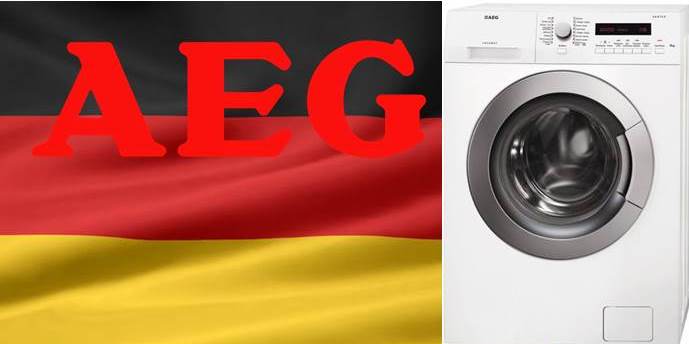
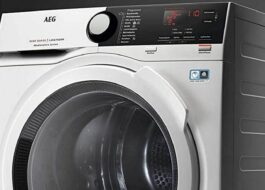
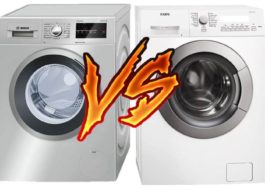
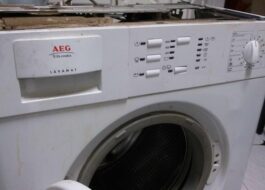
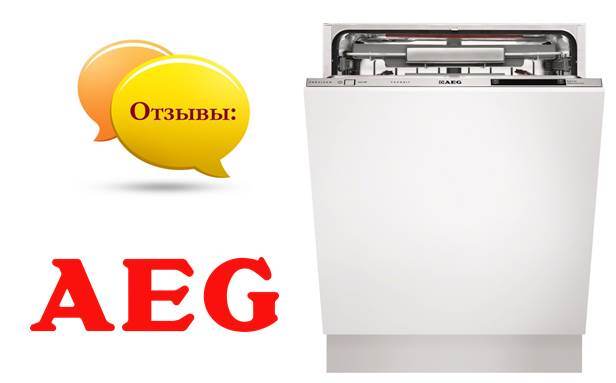
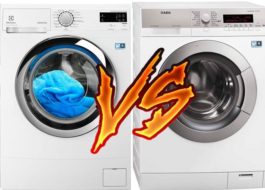










Add a comment